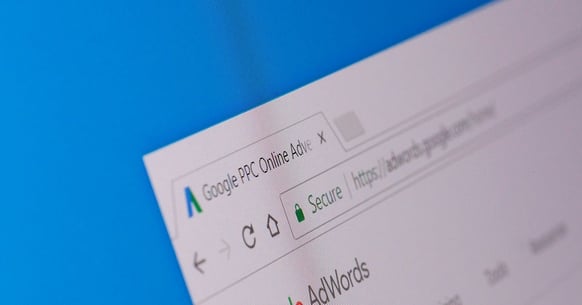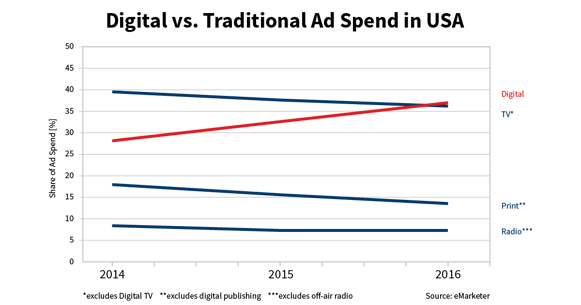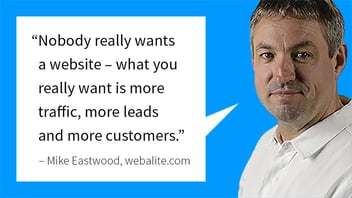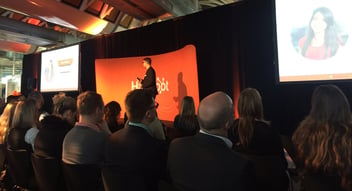Online Advertising can quickly drive targeted traffic to your website
"Build it and they will come" only works in the movies. Paid Traffic, Pay Per Click (PPC) or Online advertising – doesn’t matter what you call it – is all about driving traffic (attracting visitors) to your website, at your expense.
Why pay for traffic?
Free traffic is fantastic – however, until you’ve built up your content, your brand and referral traffic sources it’s unlikely to generate the number of visitors you’re looking for. Online Advertising can drive targeted traffic to your website immediately. The volume of traffic is determined by the size of the target market and your budget.
Targeted Online Advertising
Targeting is important because the more accurate your target audience the less you pay and the more like the visitor is to convert. A conversion is when a visitor takes action and downloads a Lead Magnet (a piece of high value content) in exchange for an email address.
Different advertising platforms have different ways of targeting an audience:
- Google Adwords
- can target the keywords people enter into the search engine and the geographic region the person is searching from.
- Facebook Advertising
- can target people based on demographics (age, gender, location,etc.) and interests.
- Retargeting
- can show your ad to people who have visited your website already.

Before you start with Paid Traffic
It’s important that you get your marketing system sorted before you start paying for traffic – otherwise you’re just throwing money away.
Before you start driving traffic to your site you must have:
- Landing Page with sales copy to educate and convert your visitor into a lead or, at the very least, entice them to explore your site more.
- Lead Magnet which has content, or an offer, of value to the visitor that motivates them to take action.
- Call To Action (CTA) to entice your visitor to take action and download a Lead Magnet in exchange for an email address.
- form to capture the visitor’s first name, an email address, or more information. Remember the higher value your Lead Magnet the more details you can ask for.
- Customer Relationship Management (CRM) System so you can market to you newly converted visitor.
- Email Nurture Sequence so you can follow up your visitors automatically.
Advertising Content
Historically advertising was sales in print or on screen - the advertisement was to either build brand awareness or push to make a sale, sometimes both. This Outbound Marketing approach - was more in line with the saying “when you only have a hammer every problem looks like a nail”. People quickly turn off when they are being ‘sold to’.
Because we were bombarded by advertising messages we started to block them out. Advertisers found new ways to interrupt us, becoming more invasive, making us pay even less attention.

Inbound Marketing is a different approach to advertising. Essentially we’re paying for content marketing where people are looking for information. Rather than advertise the features and benefits of a product - as Outbound Marketers did - Inbound Marketers seek to educate, inform and entice visitors to learn more. Now the aim is to market content, offering a solution that the searcher is looking to solve, only once we’ve explained the problem and raised the issues do we start to offer a solution.
Types of Online Advertising
There are four main types of advertising online:
Search Advertising
The most successful online advertising has been Search Advertising – this is what made Google into a bazillion dollar business. It works well because if someone is searching for something in a Search Engine e.g. Google then the results are going to be an ideal place to advertise. The best type of advertising is educational content because people usually are hitting the search engine looking for an answer. Some search terms are more focused on purchasing decisions e.g. price comparisons and you should adjust your adverts accordingly.
Display Advertising
Maybe you know them as banner ads. This is one of the least effective forms of digital advertising and this is reflected in the price. Usually you pay a low Cost Per Thousand (CPM) views. This is becoming less and less effective because of "Banner Blindness" where people ignore the ads. Also the rise of Ad Blocking software means these ads are being seen by less people.
Retargeting
The most effective form of Display Advertising is Retargeting. When a visitor interacts on your website you can then target Display Advertising on other sites they visit. Retargeting works best when you Retarget visitors that have begun a purchase process e.g. if the abandon a shopping cart without completing the transaction. Because you're only showing ads to people that have shown interest the cost is low and the conversion rate is higher than less targeted Display Advertising.
Social Media Advertising
The new kid on the block is Social Media Advertising. You can pay to have your content injected into someone's Social Media feed for a fee. This has been an extremely effective method for inflating the value of Social Media companies and to reach your target market. Social Media Advertising works best when you promote the type of content your target market looks for when they are relaxing – in other words people don't usually go to Social Media to shop.


).png?width=352&name=app.hubspot.com_academy_2159974_(Social%20optimised%20(FB)).png)